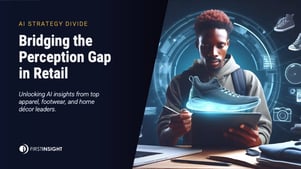It wasn’t so many years ago that ketchup and Heinz were synonymous, Starbucks was the default destination for meetups, and J. Crew was the darling apparel brand of aspirational young adults.
Like most everything else about how we live today, the retail landscape has been reshaped by economic turbulence, disruptive technology, and the growing influence of a new generation of consumers.
The retail industry now faces a major challenge: how to attract and retain customers whose first choice has little or nothing to do with traditional loyalties.
The leading example is the surge in popularity of less expensive grocery store brands that have undermined iconic names that were category standards for generations. Kraft Heinz and Del Monte have had to restructure or reorganize their businesses to deal with declining sales. Shoppers have decided that store brand ketchup and canned peaches are just as good as the classic ones they grew up with.
Similar trends in the apparel industry contributed to J. Crew’s bankruptcy. Inflation exacerbated Starbucks’ self-inflicted woes, including low employee morale and having forsaken the coffeehouse atmosphere that made it popular in the first place.
Across the board, traditional brand loyalty is rapidly losing its punch as shoppers have had to become more frugal, are better informed, less trusting, and have higher expectations for ethical brand behavior.
Numerous studies have found that the majority of consumers, especially Gen Z, have become brand agnostic—more interested in the value-for-money proposition, convenience, novelty, and relatability than in legacies and logos.
Although the economic power of Gen Z consumers (now 13 to 28 years old) is currently less than 20% of global consumer spending, credit card company Visa forecasts that it will be the primary driver of growth over the next decade. At the same time, spending by older generations is expected to decline.
Future efforts by retailers to create loyalty will require adapting to an evolving set of principles dominated by “transparency, innovation, and identity,” according to Allison McClamroch, head of brand US at Zeno, a global public relations consultancy.
In a recent article on industry news site Retail Brew, McClamroch cited a study by Zeno that found Gen Z-ers favor retailers that “stand for something, and align with their identity. … This generation was raised in the era of misinformation,” she said. “They want brands to talk back, stand for something, and be radically transparent.”
This is a very different marketplace than the one we inhabited before the pandemic and before the Gen Z crowd began to swell. To become and remain successful, retailers will have to figure out how to make the relationship personal, to generate a sense of belonging, to create community with customers.
Companies that have already begun doing that include Dick’s Sporting Goods. Dick’s strategy was unveiled in 2021 with the debut of a customer-centric makeover and rebrand as Dick’s House of Sports. Instead of just hawking merchandise, the new concept turns shopping into an adventure. The new format boasts multiple hands-on entertainment experiences, among them an actual football field and running track that can be converted into an ice hockey rink, batting practice cages, golfing simulators, putting greens, and rock-climbing walls. The stores host celebrity appearances by sports figures and community-sports activities.
Grocery chain Aldi enjoys cult-like customer loyalty for its low prices and mostly private label goods, but especially for its “Aldi Finds” aisle where the company sells odd-lot non-food merchandise at very low prices. Loyal Aldi customers are known to visit multiple locations just to see what is in the “Finds” aisles on any given week.
Toymaker Lego is famous for its contests, seminars, and camps and for its "Lego Life" website where users can connect with other fans and share their creations.
The challenge of establishing loyalty by creating community with customers may sound improbable at scale and absurd against a backdrop of technology-driven (AI) processes. How do you make it personal when you’re Walmart? For starters, you might do what Walmart is already doing—replace self-checkout with human cashiers. Remember the Walmart greeters.
Subscription required.

















